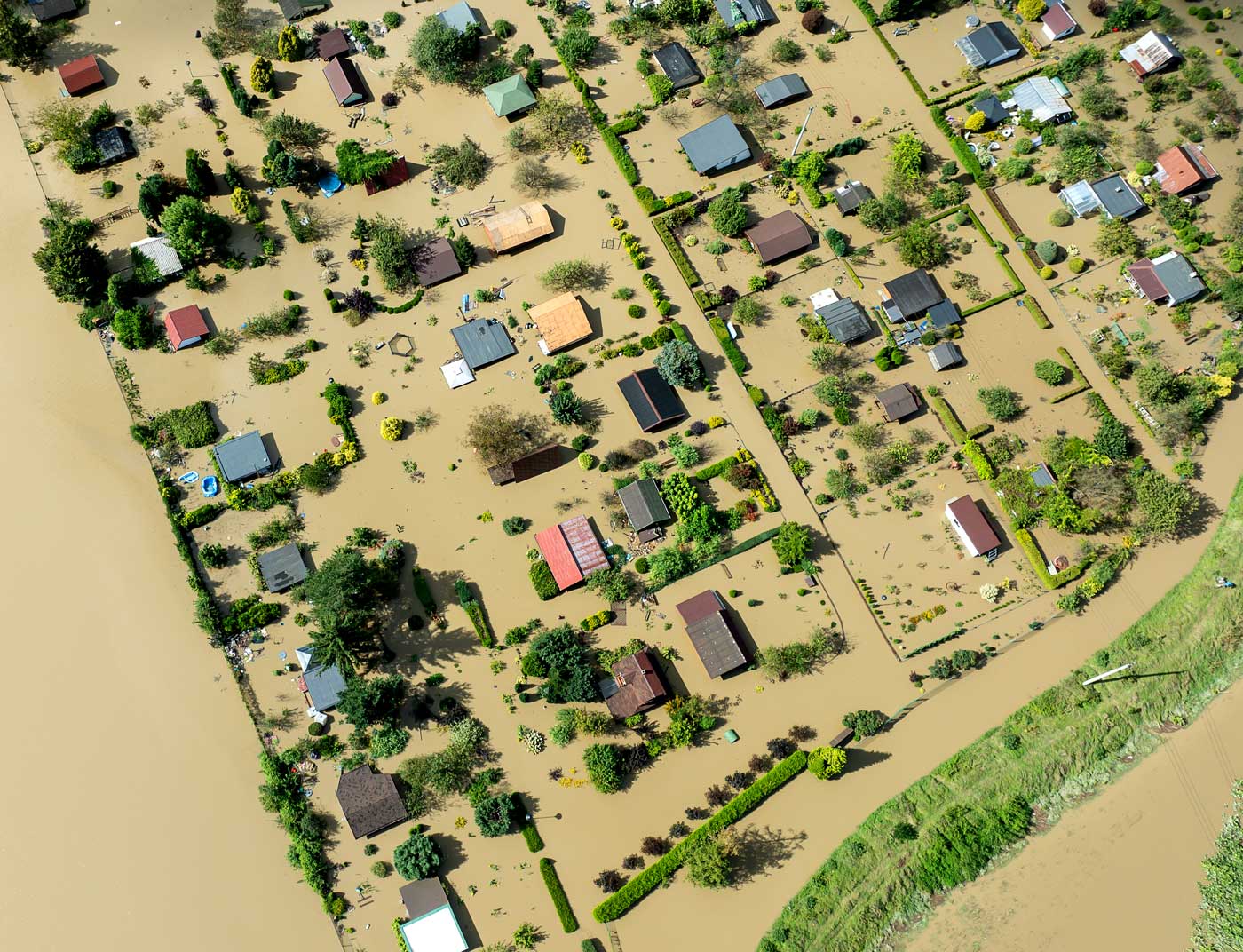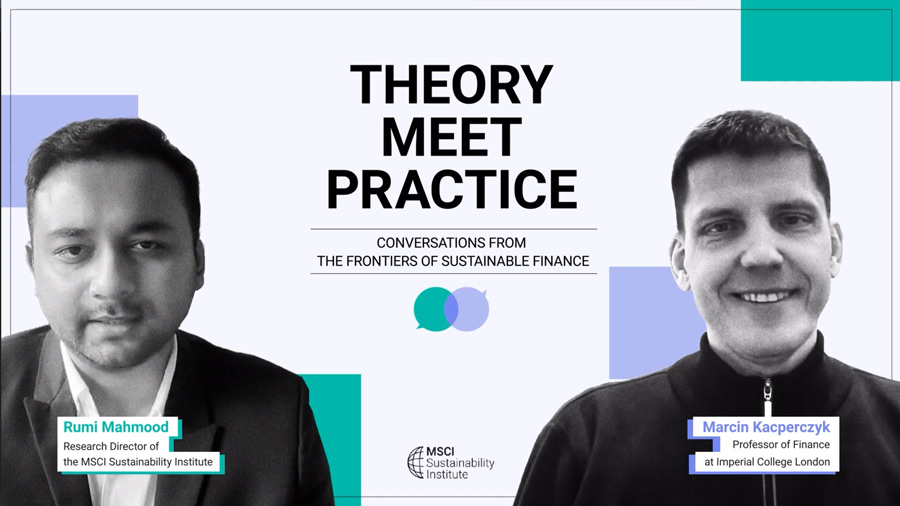While climate policy, technologies and science are evolving at speed, investors have practical tools to integrate these changes into their decisions.
Download the key slides
That was the among key themes at a conversation on climate scenario analysis convened by the MSCI Sustainability Institute that explored how markets are evaluating our climate future and the scenarios shaping investor strategies.
“Our goal is pretty simple,” Linda-Eling Lee, the Institute’s founding director, told attendees. “We want to lower the barriers to entry for applying scenario analysis so that you can better understand what could happen to your investments should different future pathways play out.”
Here are five of the biggest takeaways from the conversation, which you can watch on demand here.
1. Investors are bracing for the worst but hoping for the best.
While the lion’s share (84%) of investors globally say the economy will be negatively impacted by extreme weather and other climate-related physical risks, nearly half (47%) of respondents said they expect that efforts to adapt to a warming world will succeed, according to a survey conducted by the Institute to capture what market participants think about our climate future.
“I think these two figures sum up the overarching story best,” said Russ Bowdrey, an Institute fellow and researcher with MSCI’s Climate Risk Center, who led the survey and shared some of its top-line findings.
Investors’ view on whether the economy will be affected by extreme weather (% of respondents)
Source: “What the Market Thinks: A Climate Risk Survey,” MSCI Sustainability Institute, October 2024
Can we avoid the worst economic impacts of climate change through adaptation? (% of respondents)
Source: “What the Market Thinks: A Climate Risk Survey,” MSCI Sustainability Institute, October 2024
2. You needn’t be a climate scientist to make plausible predictions about the future.
Our climate future may be uncertain, but we can intelligently consider the effects of potential outcomes, stressed James T. Edwards, an Institute fellow and senior researcher at MSCI’s Climate Risk Center and the author of an Institute guide to using climate scenarios.
At its core, climate scenario analysis can help investors improve decision-making, explained Edwards, who noted the range of attitudes, including intimidation and frustration, that can surround its use. “If you’re intimidated, you don’t need to do something complicated, because there are different stages of this analysis,” he noted, “so you can start with just scoping out your risk, which can be a very qualitative exercise.”
Edwards outlined four types of climate scenarios, ranging from the fully narrative to the probabilistic, with increasing levels of mathematical sophistication and modeling. They include model-driven scenarios such as those developed by the Network for Greening the Financial System (NGFS) that are commonly used by institutional investors.
Each type of scenario can sharpen analysis, noted Edwards, who stressed the value for investors of using climate scenarios in combination. “You can use different types of scenarios together to come up with conclusions for your analysis that are more credible and holistic, and that avoid some of the pitfalls of some of these individual scenario types on their own,” he suggested.
Climate scenarios come in different types
| Scenario Type | Biggest Strength and Limitation | |
|---|---|---|
| 1 |
Fully Narrative |
Flexible and Low Cost Scenario and analysis output is subjective and non-quantifiable |
| 2 |
Quantified Narrative |
Quantitative, yet relatively low cost and easily adjusted Scenario output is still subjective |
| 3 |
Model-driven |
Mathematical relationship between scenario definition and output increases objectivity and transparency Scenario output is a function of many assumptions, and difficult to adjust |
| 4 |
Probabilistic |
Explicitly models uncertainty around a scenario definition Requires advanced modelling techniques, only developed in certain applications |
3. Look beyond the headlines.
While findings that emissions have yet to peak or that temperatures are rising to record levels may dominate the news, investors can find value in looking at the changes beyond the headlines, observed David Carlin, founder of advisory firm D.A. Carlin and former head of risk at the UN Environment Programme Finance Initiative, who stressed the value of “second-order numbers.”
Transitions, Carlin noted, tend to follow a pattern of slow growth from a low base before accelerating rapidly, a phenomenon hidden by the headlines. Consider that investment in clean energy last year was twice the amount going into fossil fuels, he noted, or that 80% of new power generation capacity coming online is coming from renewables. Or that Texas, which already leads the U.S. in wind power, surpassed California last year as the state with the largest solar capacity. The evidence on climate-related physical risk, meanwhile, suggests “we may have committed to more warming than we thought,” Carlin noted. “We also know we can’t just switch everything off tomorrow.”
Financial firms that succeed will outperform competitors in managing climate transition risk while differentiating themselves not solely by sourcing capital at lower cost but also by experience. “The transition,” Carlin predicted, “is going to proceed at an increasingly disruptive pace.”
4. Inaction will cost more in the long term.
Climate scenarios published by the NGFS are designed to inform analysis and guide policymaking worldwide, explained Claudio Baccianti, an economist with the Bundesbank’s Sustainability Hub, who provided an overview of the latest generation of the network’s scenarios based on his work in their development.
Baccianti highlighted updates to the fifth edition of the scenarios, which NGFS published in November. The updates:
- Include a new damage function for chronic physical risks such as rising temperatures.
- Assume that emissions will fall more slowly than projected previously.
- Adjust the (shadow) price of carbon upward to reflect the higher cost of meeting climate targets following delay in climate action.
- Sharpen the view on the cost of inaction; the scenarios assume that a continuation of current policies would reduce global GDP 15% by 2050 compared with a scenario without climate change.
“That’s quite a significant loss,” observed Baccianti, who noted that the new damage function better captures the effects of climate change, and that the NGFS also plans to publish five short-term scenarios later this year.
5. Climate scenarios are powerful tools for building resilience.
Whatever our climate future may hold, investors will be better off for having explored varied scenarios, suggested Carlin, who compared the use of climate scenario analysis to the holding of capital reserves or the purchase of insurance to absorb potential losses.
“We should be thinking about climate as a problem to be defended and insured against, not a problem where the right solution will come out of the blue,” he noted, adding that the value of scenarios lies less in mapping out the highest or lowest points “but in the dynamics encapsulated within.”


